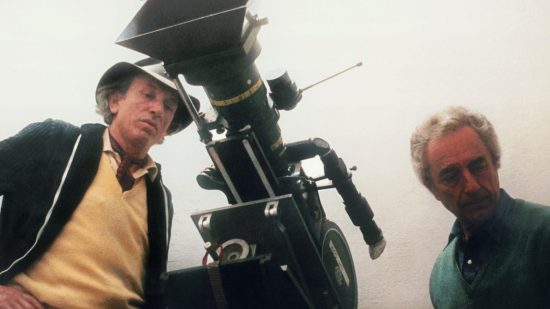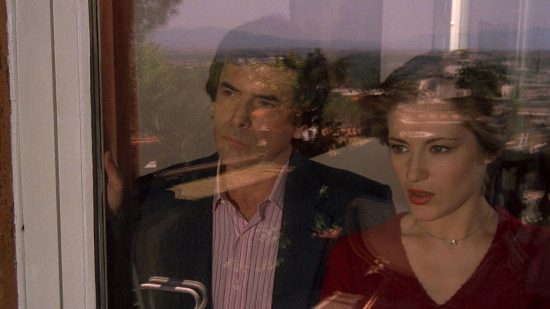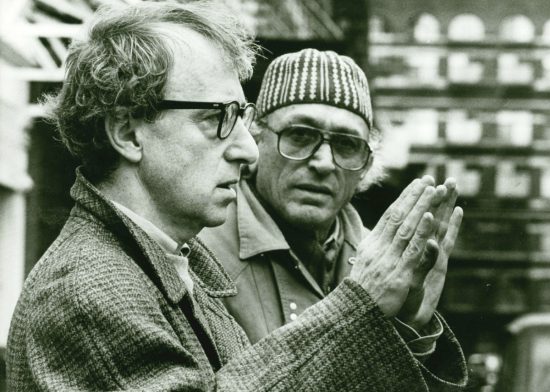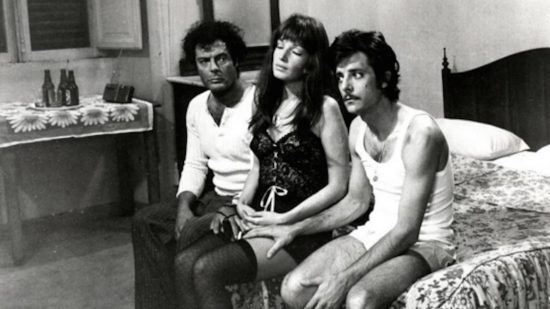Humanity & Cinema: Fariborz Kamkari talks about Carlo Di Palma
Trevor Hogg chats with Fariborz Kamkari about the global influence of Italian cinema and cinematographer Carlo Di Palma while talking about Water and Sugar: Carlo Di Palma, the Colours of Life…
Reluctant to do a biographical documentary on famous Italian cinematographer Carlo Di Palma (Blow-Up), Iranian filmmaker Fariborz Kamkari (The Flowers of Kirkuk) saw an opportunity to adopt a wider perspective. “Seven years ago, Adriana Chiesa [the widow of Carlo Di Palma] asked me to make Water and Sugar: Carlo Di Palma, the Colours of Life [2016]. My first answer was, ‘No.’ Because even though I love Carlo Di Palma’s work it’s not necessary to make a commemorative or biographical film. But when she insisted and showed me some materials then I discovered it was possible to make a film not only about Carlo Di Palma but about Italian cinema during the period in which he worked from 1946 until 2004. Carlo made more than 110 films. Most of them had a great influence on me. I’m Kurdish and from Iran. All of my childhood was spent during the war between Iran and Iraq in Kurdistan. I saw many similarities between my early life and Carlo, and how cinema influenced his life because he was a child during the Second World War. It reminded me of all of the motivations that I had to become a filmmaker. These were the things I felt I could talk about in this film and show it by talking about Carlo’s life and work.”
Kamkari had forged a business partnership with Adriana Chiesa before the project. “Adriana had distributed my previous two films so we knew each other. She didn’t want to make a film with an Italian filmmaker because even though Carlo was in touch with Roman Italian origins his cinema was of Roberto Rossellini, Michelangelo Antonioni, Bernardo Bertolucci and Woody Allen; those are films that have a worldwide view. It was interesting for Adriana to have a foreign filmmaker show how Carlo’s work influenced the world. In our film, most of the people interviewed are not Italian.” The list of interviewees includes actors, directors, cinematographers, agents and film critics such as Alex Baldwin, Fabio Ferzetti, Wim Wenders, Michael Ballhaus, and Giovanna Cau. “I was almost able to get all of the people I wanted. We spent five years travelling around the world. We shot in Cannes, Moscow, and New York in order to have access to these people. The most important thing that touched me was the friendship and relationships with Carlo. Some of these people just met him once or twice like Mira Nair but she spoke about him like a close friend. That was touching for me. I discovered the humanity. The reason why his films are so beautiful is because there’s this big soul behind them.”
“The way to show all of this passion, love and humanity was to follow Adriana as she researches the career of Carlo to know him better and in the process discovers something bigger than their life together,” explains Kamkari. “The most important characteristic of Carlo is his search for perfection. He was one of the few directors of photography in that period after the war who wanted to read the script. Carlo wanted to be involved in the writing process. Most of the great directors of photography just cared about the lighting. Carlo started working and thinking about the photography at the early stage of the film process. Another characteristic of Carlo was each film was different. Sometimes in one year he made a comedy and a drama; these two films would be completely different in regards to the photography. I chose the most perfect films of Carlo where he was able to show his talent.”
“I worked with five different directors of photography and made a selection of two hours of Carlo’s films to show them the characteristics of his photography,” remarks Kamkari. We tried to respect Carlo’s work with the lighting and colours.” There was no effort made to unify the look of the various footage formats. “I wanted to keep the differences. It’s like a mosaic for me.” Not known for giving interviews was Woody Allen. “Woody Allen worked for more than 15 years with Carlo Di Palma. They made 12 films together and were great friends. It was quite easy. We spent one whole day with him and had a long interview. In the film, you saw only a small part as we only speak about five films.” Di Palma makes an appearance courtesy of archive footage. “He came from a generation that made black and white films. But when he turned to colour films it was fantastic because Carlo treated film like a painting. I had all of the film clips that I wanted and received a ‘no’ answer from Adriana. I know that it has been expensive and difficult to have all of the clips. We didn’t provide a new soundtrack. The music is taken from the original films made by Carlo.” The first cut of the documentary was four hours long and was paired down to 90 minutes. “It was a great sacrifice to take out all of those interviews with much more people.”
“I’ve made five films and can tell you it’s the most difficult thing to find a director of photography who knows exactly what you want as a director and the needs of the screenplay,” notes Kamkari. “Carlo had a great technical and creative ability; he knew the script and could help a lot. All of the directors who I interviewed told me that Carlo would make suggestions with the script before shooting even began.” The project was revealing about the craft of cinema. “It reminded me why I became a filmmaker. When you are a filmmaker you make a lot of compromises. Carlo showed me that you should not. It brings down the quality of your work. You should fight to do the best for your film. The thing that I share with Carlo is a passion for cinema. Cinema is not only for entertainment but also an instrument of communication.”
Acqua e Zucchero Trailer from Adriana Chiesa Enterprises on Vimeo.
Many thanks to Fariborz Kamkari for taking the time to be interviewed.
Trevor Hogg is a freelance video editor and writer who currently resides in Canada; he can be found at LinkedIn.














